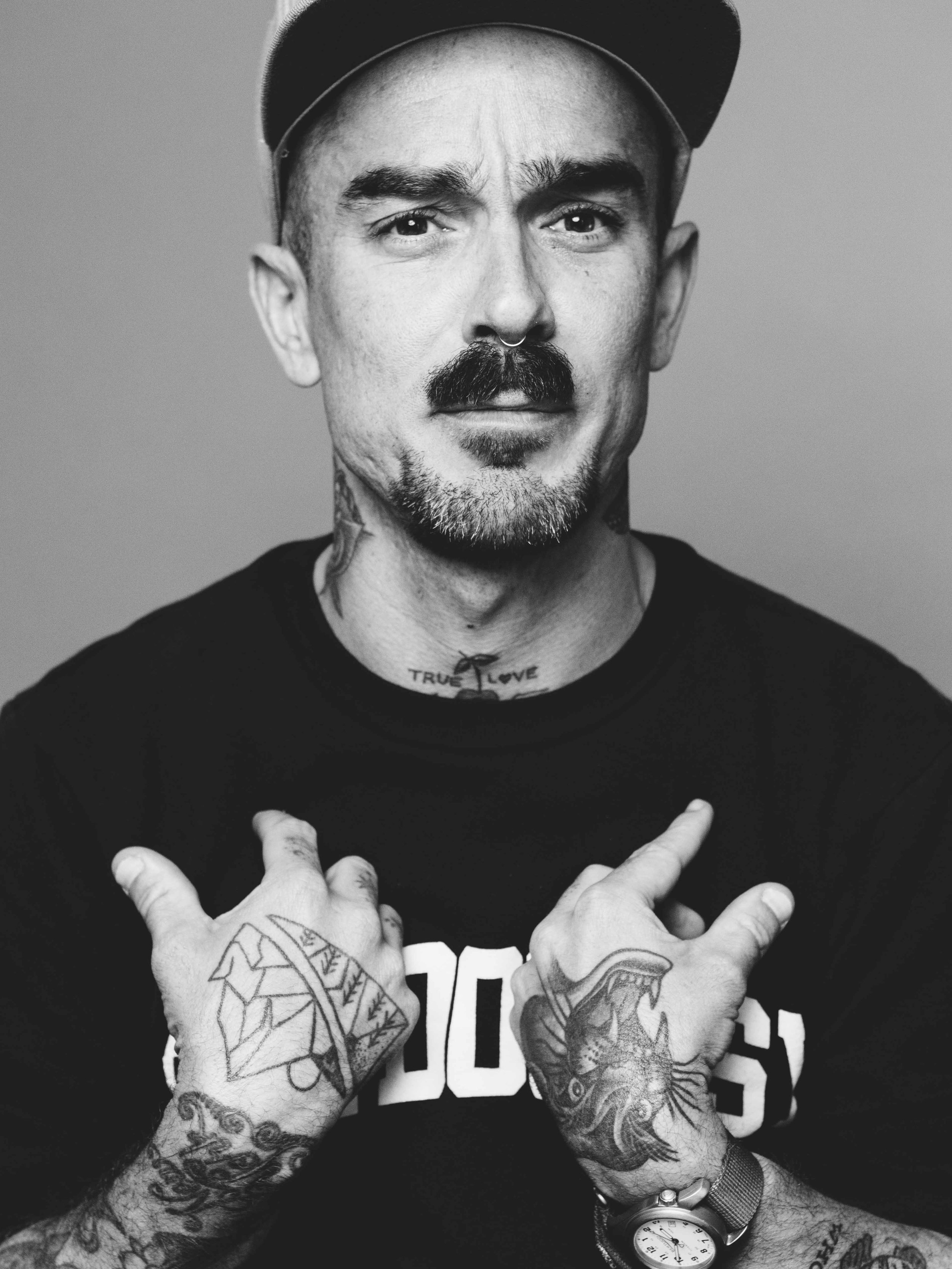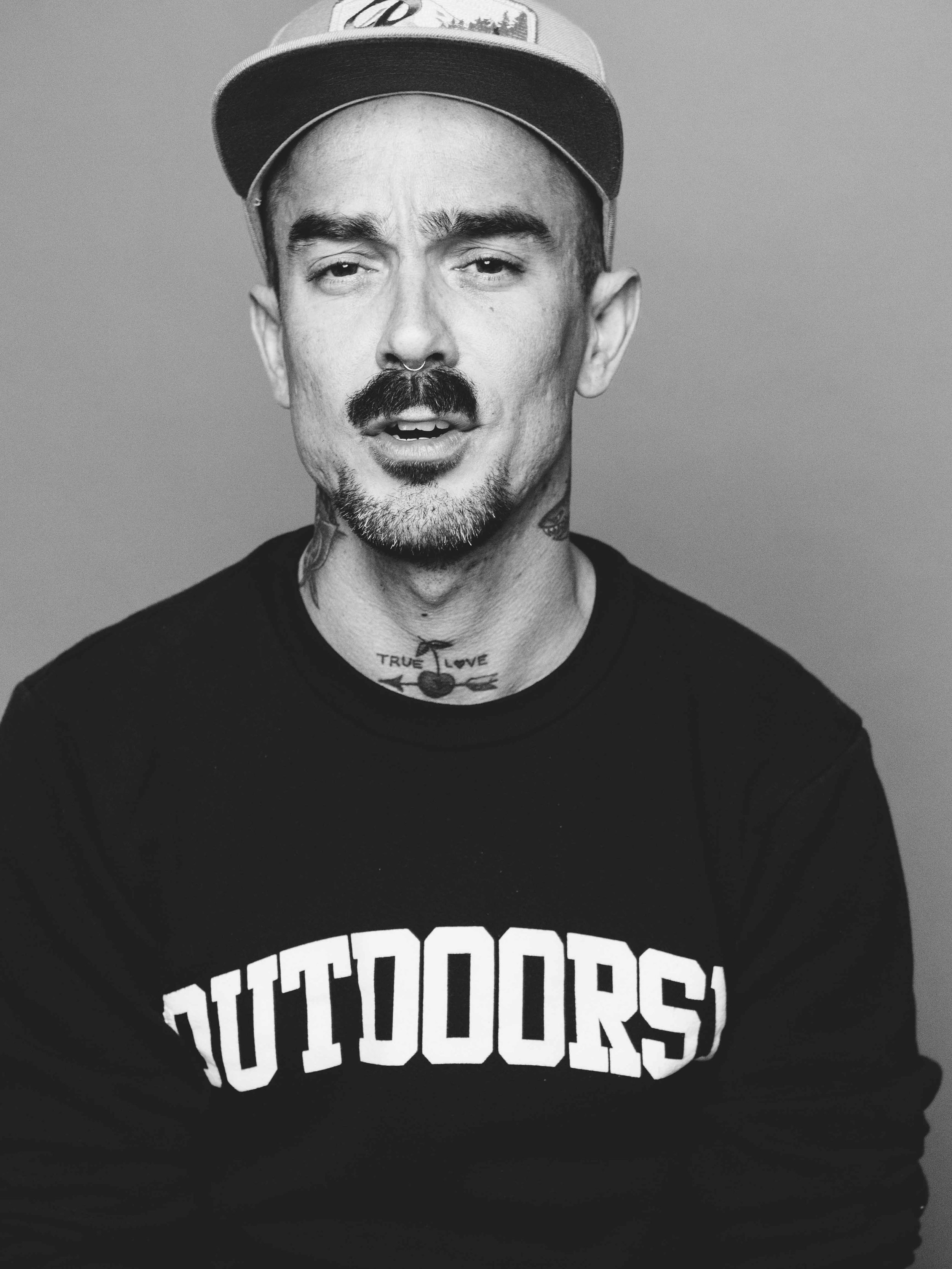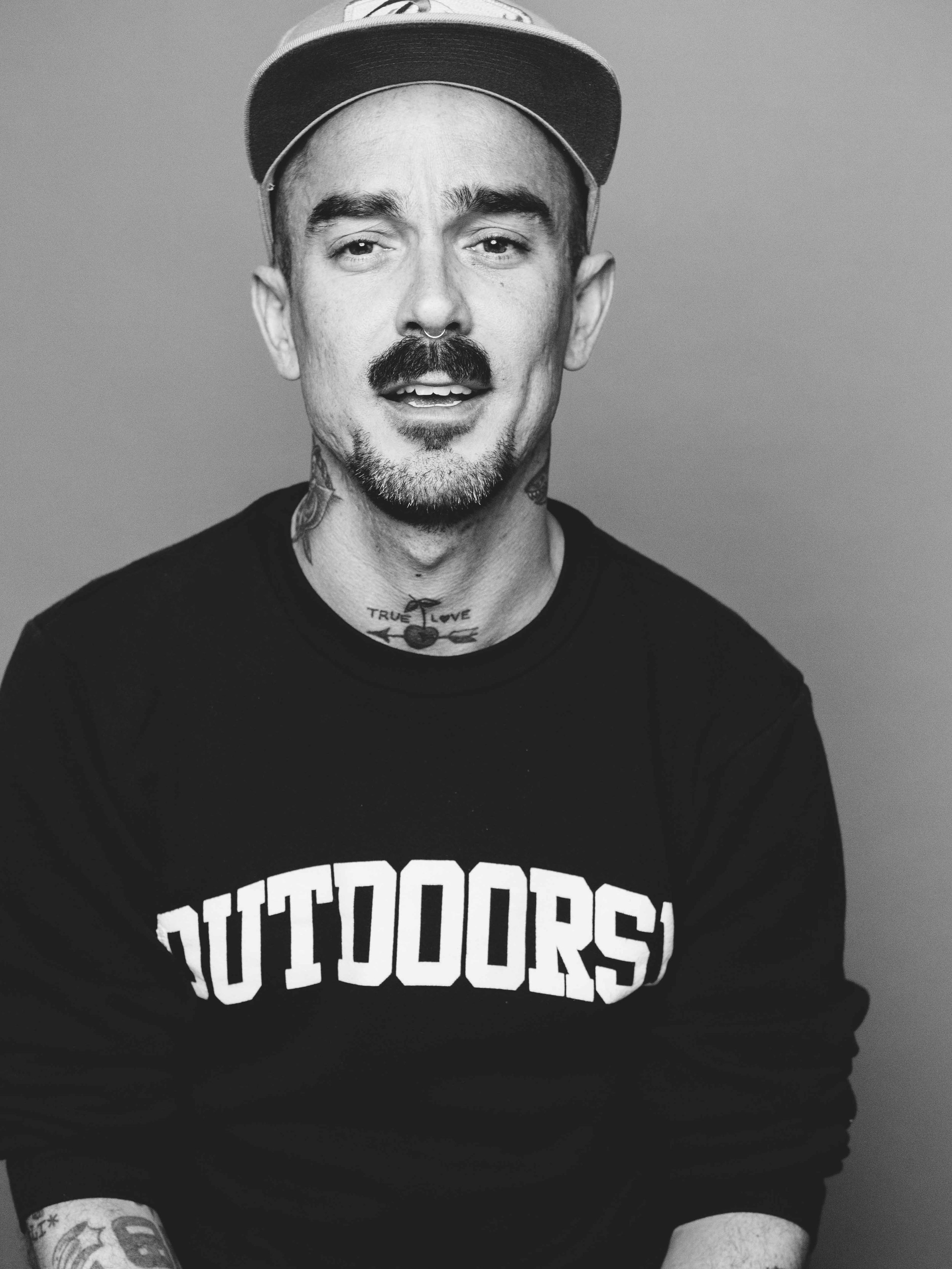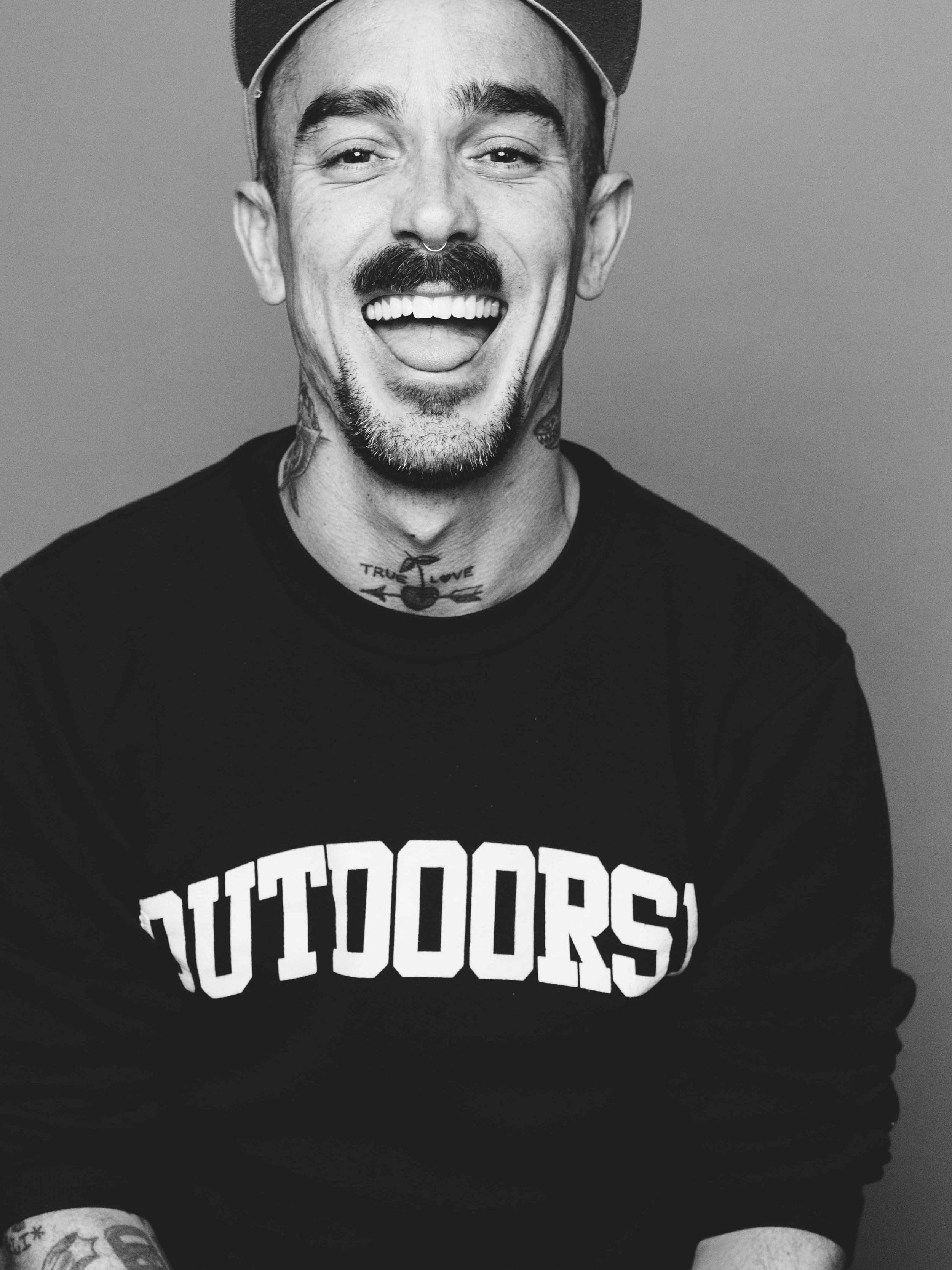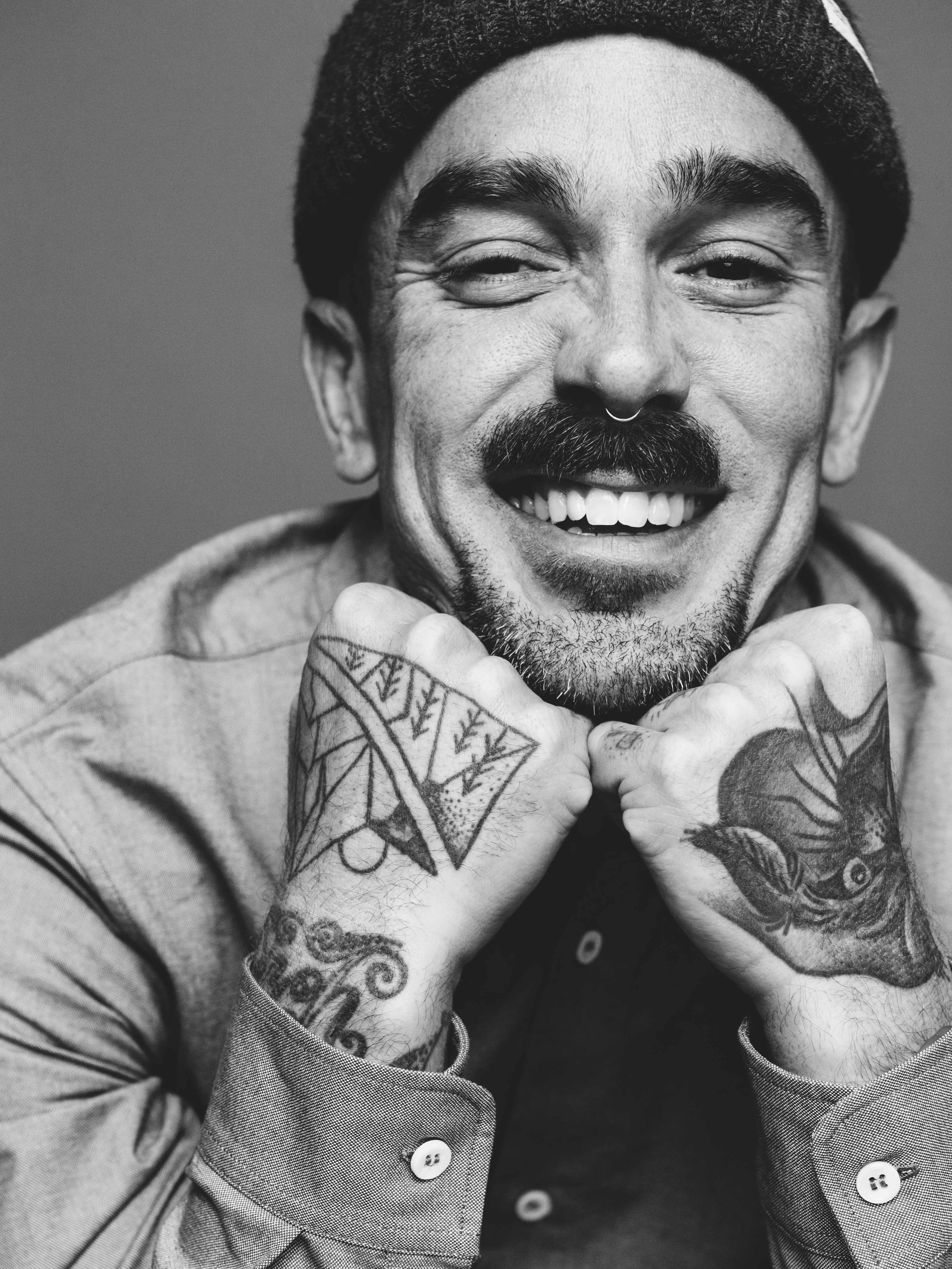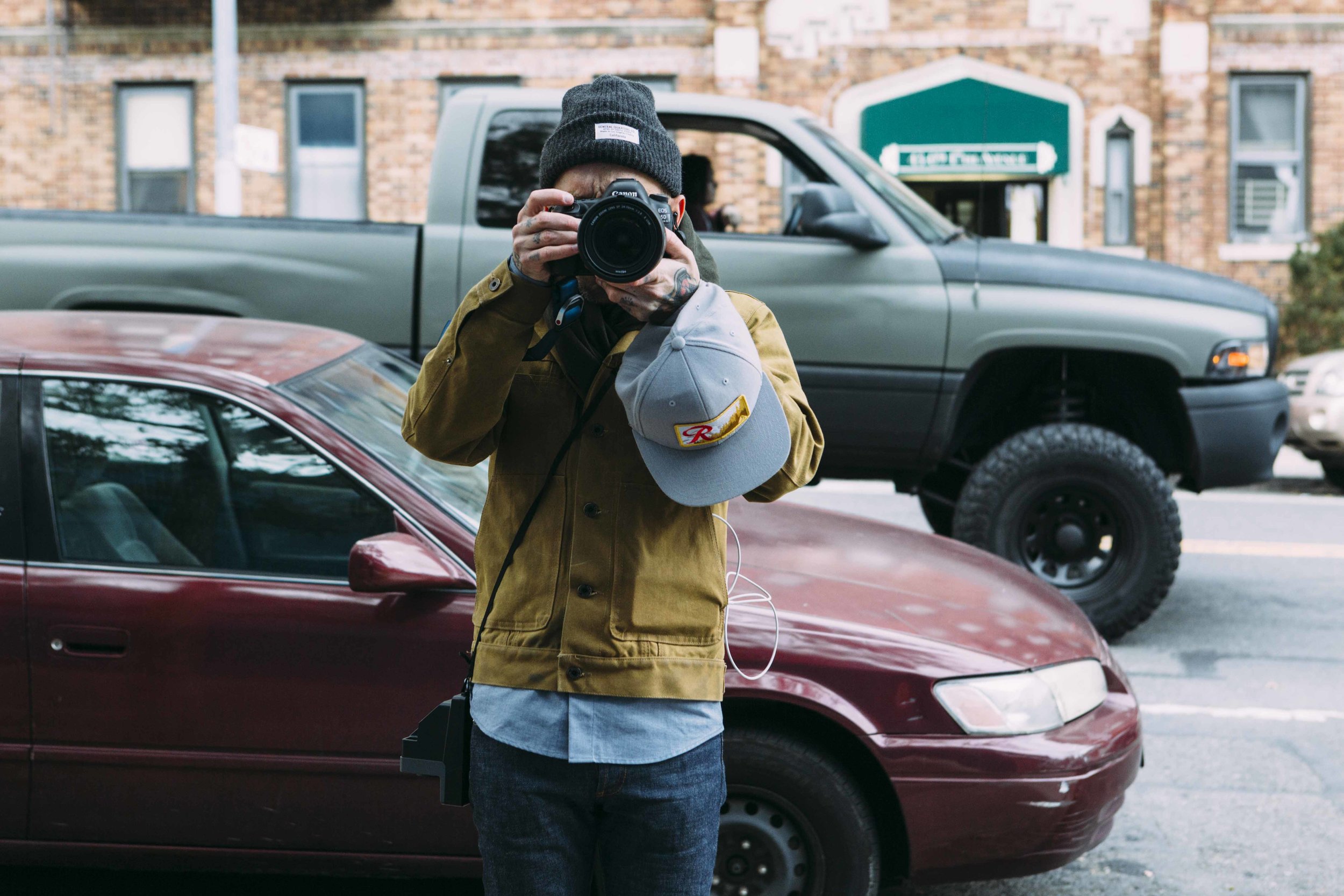Take Better Portraits: Tips from Emil Cohen
Ben Ashby
Sometimes you meet people in random places. Sometimes you meet characters that need to be photographed. This Christmas season as people are gathering together we wanted to propose the idea of taking portraits of friends and family. To learn more about taking the perfect portrait we asked five of our photographer friends about their portraits and for tips on how to make yours better.
Our first photographer is New York based Emil Cohen. I ran into Emil at American Field in Brooklyn earlier this month and knew right away I wanted to go to him for advice. I quickly introduced him to Brandon and they did a dual portrait session. Tomorrow we will see Brandon's portraits of Emil, but today it is all about Emil and his advice to you...
Who are you. Where are you. Give us your links. I'm Emil Cohen, I'm a New York based photographer specializing in portraits and people. You can see my work at www.emildcohen.com / www.instagram.com/emilcohen and www.instagram.com/portraitsinprovincetown
How long have you been a photographer? Is it your main job? I've been an amateur photographer my whole life. Photography has been a family interest dating back to the 19th century. In 2011, I began the graduate program at Tufts University's School of the Museum of Fine Art and received my MFA in 2014. I mark my first day of grad school as when I became a professional photographer.
When did you take your first portrait? I can't tell you when I took my first portrait, but I do remember the first time one of my portraits was recognized outside of my immediate world. It was August of 2009, and I had one more semester of college left. I had taken a photo with an alpaca earlier that summer and decided to enter the photo into a contest run by The Student Travel Agency, an internationally renowned company for students and young adults who want to travel the world. When they announced my name on Facebook, I "whooped!" so loudly, that I got yelled at by my superior at my internship at National Geographic. But it didn't matter because part of the winning prize was a free trip to Europe! By December, I was off on a plane and would be back for eight weeks. Photo below:
How have you progressed over time? What do you feel has been your most improved quality? Over time, I feel that my aesthetic has become stronger. I continue to study other photographers and artists whom I admire, but rather than mimic them, I try to incorporate what I love about their work and apply it to my own vision. My most improved quality has definitely been the working dynamic that I create with my subject. As a photographer who specializes in portraits, it's crucial to have the person who's in front of the camera trust you, the photographer. In doing so, they let their guard down which will therefore, allow me to capture a true version of themselves. Sometimes you're given days or hours, and sometimes just a few minutes, but each experience has to be unique and met with the same amount of tenacity and determination.
What makes for a good portrait? To me, a good portrait is an image of person or place that shows the true version of who or what they really are.. There is a fine line between a headshot and a portrait, and the difference is honesty. With a headshot, you're trying to sell yourself to a casting agent which, while it's an attractive photos of a person, might not showcase who they really are. Photographers like Peter Hujar, Irving Penn and William Klein are portrait photographers who stripped away the background and forced a viewer to gaze at the subject head on. Then you have photographers like Alec Soth, Larry Clark and Nan Goldin who create portraits of places and communities and are just as strong and evocative as the studio photographers. In the end, what all these photographers have in common is that the camera disappears in their work, leaving the viewer gazing into a window of a raw and real moment caught in time.
Do you prefer natural light or artificial? Why? Both! Natural light and artificial light both have their advantages. A photographer who knows their way around strobes will be able to recreate sunlight using flashes and use the strobes to create intentional dramatic lighting. The key is asking yourself how you want to light the photo before you shoot and then plan accordingly. For my studio portraits, I rely on a defused light which creates a soft and even light on my model, but when I shoot outdoors, I have to decide what time of day and what weather conditions I want to be shooting in. Will it be around dawn or sunset for the Golden Hour lighting? Or do I want a cloudy day that will act as a natural soft box? And look at other people's work that you love and figure out how they did it! Always a useful idea when trying to plan a photo.
How important is composition and what makes for good composition? This is a tough question because it's so subjective. For me, composition is crucial to achieving the best version of the photo that you envision. A composition will include a few key thoughts such as framing, depth, leading lines, and symmetry. If you need a refresher, here's a great list published on Photography Mad.
Color or black and white? Both! Before I take a photo, I try to think whether or not the image will be black and white or color. Both palates have their own benefits. Photographers like Penn, Richard Avedon, Horst P Horst, Bruce Davidson, Vivian Maier and Diane Arbus, utilized black and white film to their advantage. These photographers started only having black and white film and therefore thought accordingly: creating photographs that are high in contrast, rich in detail and having the color removed, forced the viewer to gaze specifically at the subject that was being photographed. It's like the Wizard of Oz. The beginning of the film in Kansas features some truly breathtaking cinematography because they knew they were shooting in black and white and therefore, had to think in black and white while they shot it.
Then Dorthy lands in Oz and all of a sudden, you catch your breath at all the incredible color.
Color photography is amazing because you get to think differently. With color, you start thinking of complimentary colors, temperature, color balance etc. I love artists like Cathy Opie, Todd Hido, Joel Sternfeld, Greg Crewdson, Jim Dow and David LeChaplle because of their eye for color and their ability to use the color as tool for composition.
What camera do you shoot with? Canon 5D Mark iii, Iphone 8 and a Pentax K3000 35mm
Any final advice: Two things:
1. SLOW DOWN. Taking a 4x5 Large Format class was revolutionary for me because I was forced to slam the breaks on my shooting. Due to the high cost and many steps that it takes to take one image, you as a photographer can't just point and shoot. Large format photography takes time and precision which is often forgotten in a day of digital photography. I challenge any photographer to limit themselves when their out shooting a project or portrait. See how much stronger your work becomes when you allow yourself the time to breathe and think before you shoot.
2. DO YOUR HOMEWORK. I am of the belief that no idea is truly original anymore. However, that doesn't mean that you can't create original work, it just means understanding the conversation that already exists and how you as an artist can join in on the discussion. Do research online or the library. Whether it's Google, or Tumblr or going to a museum of photo gallery in your city, go and learn about who else is out there. Support your fellow photographers and be inspired at the work their creating.

